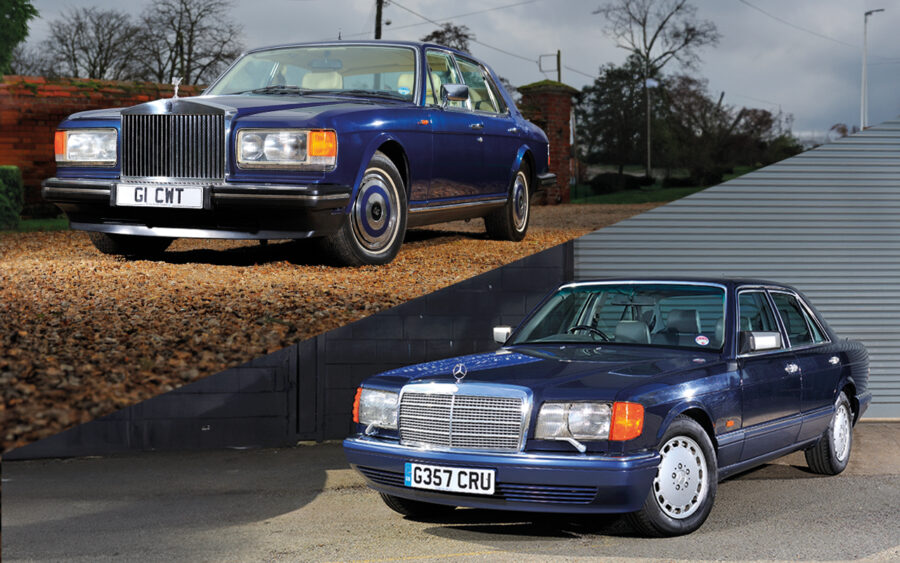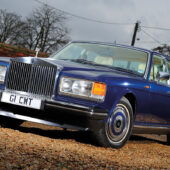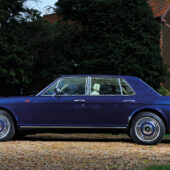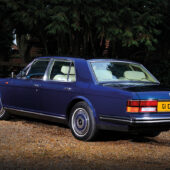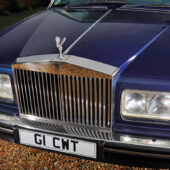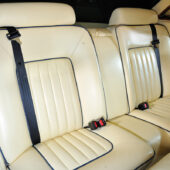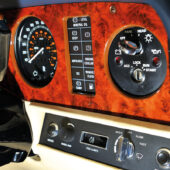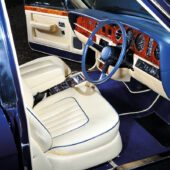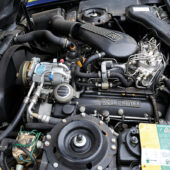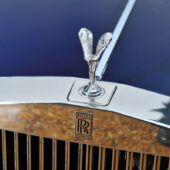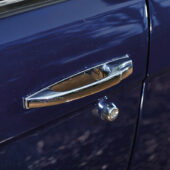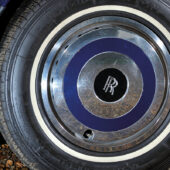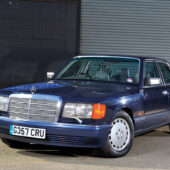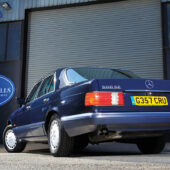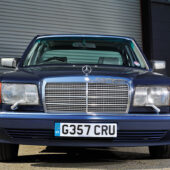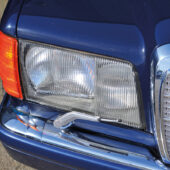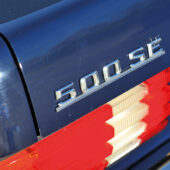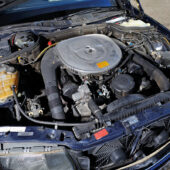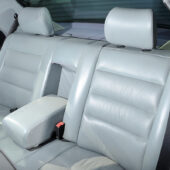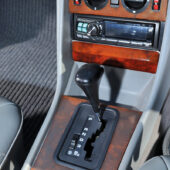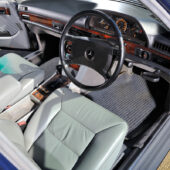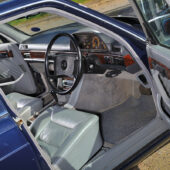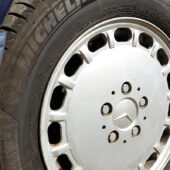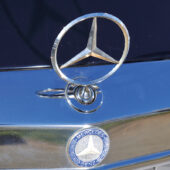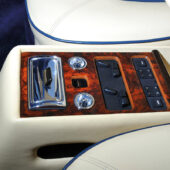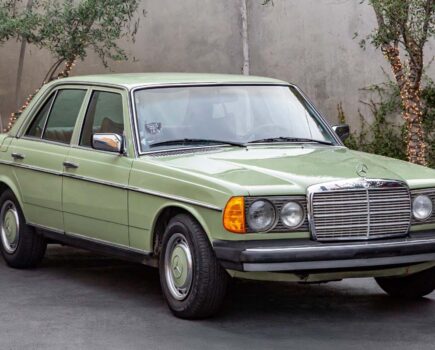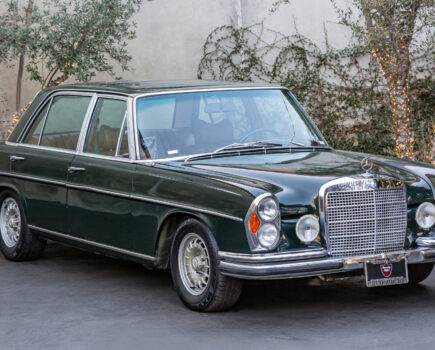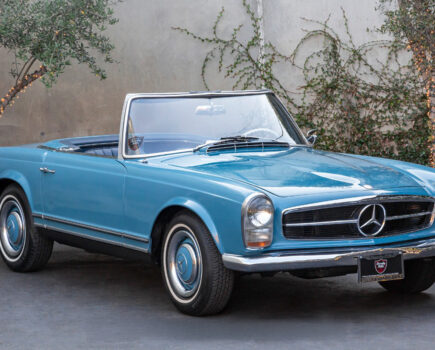Mercedes was at the top of its game when the W116 S-Class was released bristling with technology. Does the Silver Spirit stack up?
Words: Paul Wager Images: Matt Woods, Paul Wager
The Mercedes W116 challenged Rolls Royce’s Silver Shadow for the spot at the very top of the car market. Although the pair arrived at much the same place from two very different starting points, they were remarkably well matched in terms of performance and refinement – and that’s less of a surprise than you might think, since the Rolls-Royce was at the time a relatively modern design.
Fast forward a decade though and the Shadow’s replacement, the Silver Spirit, was up against a revised S-Class which left no stone unturned in the quest for high-tech perfection of the ‘best car in the world’ ideal. Since the Spirit relied on plenty of Shadow underpinnings, could Rolls-Royce carry off the neat trick of fighting off the state-of-the-art Mercedes with essentially 1960s technology?
Mercedes S-Class (W116)
The W116 launched in 1972 may have been the first of the cars officially to bear the Sonderklasse – S-Class – tag but it drew on a long line of world-class big saloons from Stuttgart. As such it represented the state of the art in car engineering and was nigh-on impossible to improve. So Mercedes didn’t even try, instead letting the car run relatively unchanged until 1979, when its all-new successor, the W126, was unveiled. Amazingly, the two cars were produced in tandem for the first year such was the demand for the older model but the new car did move the game on a long way. Unlike the gimmicky technology highlighted in many of today’s unveilings, the S-Class ushered in some significant engineering advances which have since become commonplace.
The forked longitudinal members making up the front end of the bodyshell allowed impressive offset frontal crash protection, while the smoother front end combined with a more sharply falling roofline and higher rear allowed impressive drag reduction from Bruno Sacco’s neat bodywork. Critics may have been disappointed to lose the traditional chrome bumpers and vertical lights, but in conjunction with other details like a more steeply raked screen, tapered rear body sides, recessed wipers and gutters this brought the Cd down to 0.37. Coupled with catalytic converters available from as early as 1985 and new lightweight alloy engines this showed an early regard for environmental concerns – which of course would later become crucial in the market. The W126 also debuted airbags and seatbelt pretensioners which have since become standard fit on pretty much all new cars.
At launch, the W126 range included the 2.8-litre, 156 bhp straight six 280SE, plus the 3.5-litre V8 350SE, the 4.5-litre V8 450SE and the 5-litre V8 500SE.
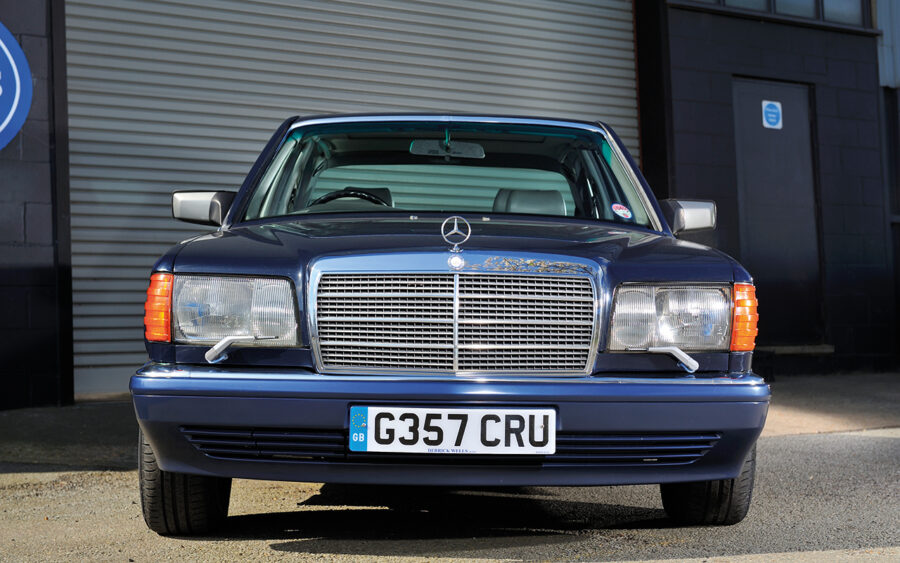
The range initially included the standard car plus the ‘SEL’ long-wheelbase version but in 1981 a first for the S-Class was unveiled in the shape of the SEC, an S-Class coupe. Powered by only the V8 engines, this massive two-door was a superb grand tourer and made even the XJ-S look small.
In 1985, the S-Class received a mid-life makeover with revised bumpers and side mouldings, while the wheels went from 14 to 15 inches. The engine range was also revised at the same time, with two new straight-six units developed for the E-Class being added to the range: the 2.8-litre M110 engine was replaced by 2.6 and 3-litre injected units badged as 260 SE and 300 SE, while the 3.8-litre V8 was bored out to 4.2 litres and wore a 420 SE badge. The 5-litre V8 also gained Bosch KE-Jetronic making it good for 245 bhp.
Meanwhile, stroking the 5-litre V8 to 5.6 litres created a 272 bhp powerplant, also offered in 300 bhp trim without catalyst which made the 560 SEL and 560 SEC the most powerful production Mercedes ever built.
Despite Jaguar offering a V12 motor since 1971, Mercedes had stuck with the V8 which traditionally gave it an advantage over the straight-six powerplants from rival BMW. In 1987 the BMW 7 Series arrived in 750i form with its new V12 engine, at which point Mercedes swiftly increased the compression of its V8s which alongside other measures allowed a power increase of 6-10% across the range. In 1988, the 5.6-litre engine was also made available in the short-wheelbase saloon.
In 1991, the W126 was replaced by another all-new model, the W140, which would see Mercedes offer its own V12 motor. The W126 continued in production for export until 1992. All told, 818,036 examples of the car were produced which makes it significantly more common than the Silver Spirit.
Unsurprisingly, given the solidity of their build, the W126 remains a pretty common sight although it seems that the coupes are slightly more numerous. Under the skin though, the two are all but identical and if you’ve never experienced these big Mercedes before are a trip into another world. The doors are enormous but swing open and thump closed with a mechanical perfection.
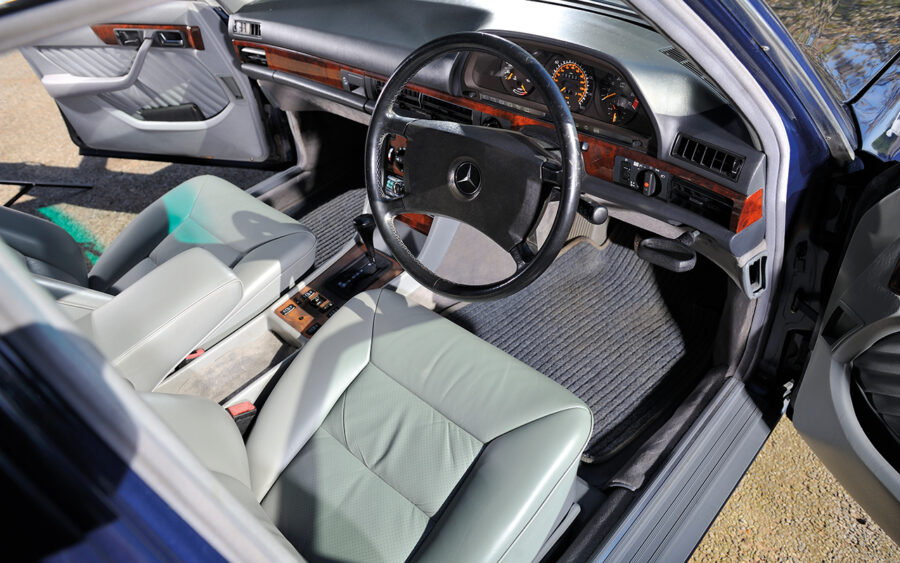
The dashboard is a world away from the rather stark fascia of its predecessor and features all the controls for the luxury and convenience kit which by the late ’80s had become a requirement. More than with any other car of the period, there’s a sense that absolutely every single element has been considered down to the last detail, from the intuitive electric seat controls which mimic the shape of the seats themselves to the action of the glovebox door and the ashtray lid.
As ever with Mercedes, there’s a single column stalk operating everything from lights and wipers to indicators but it works well once you’re used to it and cocooned in the massive seats you quickly feel confident at the helm of the mighty Benz.
The straight-six engine is all very well but if you want an S-Class you really want the grunt to go with it and that means a V8 – your only choice in the coupes in any case. The SE in our photos is powered by the 5-litre V8 and at idle it’s as quiet as the Rolls-Royce unit, as you’d expect being several decades newer in its design. Mercedes of this era always seem to have a long-travel throttle although the trade-off is that they’re easy to drive smoothly in city traffic. Give it a sharp enough prod though and the S-Class moves away with an energy you won’t get from the much heavier Silver Spirit, with the car being a surprisingly capable handler too.
Mercedes press material and magazine road tests of the era show ’80s heroes opposite-locking the big limos with abandon and although it’s unlikely many buyers ever drove them on the limit, the cars do feel more nimble at speed than their general bulk would suggest and certainly happier to be hustled across country than the Silver Spirit. The chassis of the W126 was essentially similar in layout to its predecessor, using semi-trailing arms at the rear and double wishbones at the front.
At speed the S-Class is beautifully stable and as you’d expect offers a soothing ride which although firmer than the float of the Rolls-Royce does have less thump over broken surfaces.
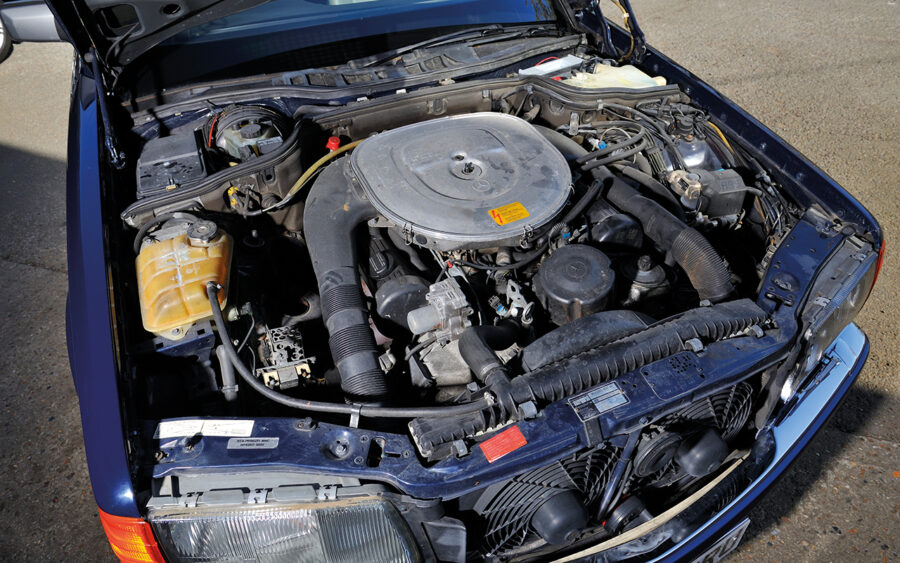
Rolls-Royce Silver Spirit
When Mercedes unveiled the new S-Class, it’s fair to assume that there was some degree of panic at Crewe, where the Silver Shadow was already 14 years old and suddenly looking dated against the smoothed-out new Mercedes. Yes, they could be confident that a great proportion of their typical customer base might prefer the chrome detailing and traditional proportions of the Shadow but equally this was the dawn of the ’80s when faster, newer and high-tech were all appealing.
They may have been making cars for the top end of society but Rolls-Royce itself wasn’t in great financial health by the end of the ’70s and in the best British motor industry tradition needed to employ some lateral thinking in order to keep itself in the game.
The solution was essentially to treat the Silver Shadow to a heavy facelift to give it a more modern style without incurring the costs of a ground-up new model programme. If that sounds like something of a desperate measure, it certainly worked to good effect since the basics of the design lived on until 1998 under the last of the Turbo R and 2003 as the Continental T.
Central to the Silver Spirit was a smoother, squarer body style penned in-house by Fritz Feller, which was perhaps more anonymous than the Shadow but with its square-shouldered bulk had no less a presence. Inside, the leather, wood and sheepskin ambience was preserved and the details subtly updated with the odd digital readout here and there.
Like the Mercedes, the Spirit has a real heft to the doors, but again like the Mercedes they open and close with a neat precision. Entering the Spirit though is very different from a conventional car – the high floor means you step inside rather than sitting down into it, putting you on the level of a modern SUV with a correspondingly commanding driving position.

Driving the Spirit after the Mercedes is like stepping into a different world: the heating, mirrors and seats are operated by heavily plated chunky metal knobs instead of the precise plastic buttons of the German car, while the headlights which are controlled from the column stalk in the Mercedes are operated by a rotary switch in the Rolls-Royce with lettering in place of international symbols.
One of the comments drivers make about the S-Class is the size of the steering wheel but in the Rolls-Royce it’s bigger again, with the delicate thin rim from another age. It’s all down to the way you drive the car though and in reality the Spirit needs only a delicate grasp of the rim to maintain serene progress. Likewise the column shifter which needs only a fingertip flick to get things underway.
Like the S-Class there’s a long travel to the Spirit’s throttle pedal which makes it easy to drive the car with the decorum it suggests. Squeeze it gently and the car just oozes away from the kerb, the pushrod L-series V8 barely noticeable. Give it a hefty bootful though and the Spirit does move away smartly. Not as smartly as the 500 though, since that famously ‘adequate’ power output translates to around 230 bhp and in a car weighing in at 2245 kg it’s no match for the Mercedes’ 275 bhp and 299 lb.ft in a car which weighs in at 1690 kg.
Sheer straight-line speed isn’t what it’s about here though and reality both the Mercedes and the Rolls-Royce are brisk enough for any purpose and neither is the kind of car you buy simply for its performance.
The Rolls-Royce isn’t quite as happy to be hurled about as the Mercedes either, hard cornering seeing it squat and wallow despite the self-levelling rear suspension and although the Turbo R would later show how just well the car could be tied down, the cooking Silver Spirit is biased towards comfort. On British roads it’s more refined than the more firmly sprung Mercedes and progress is really very civilised.
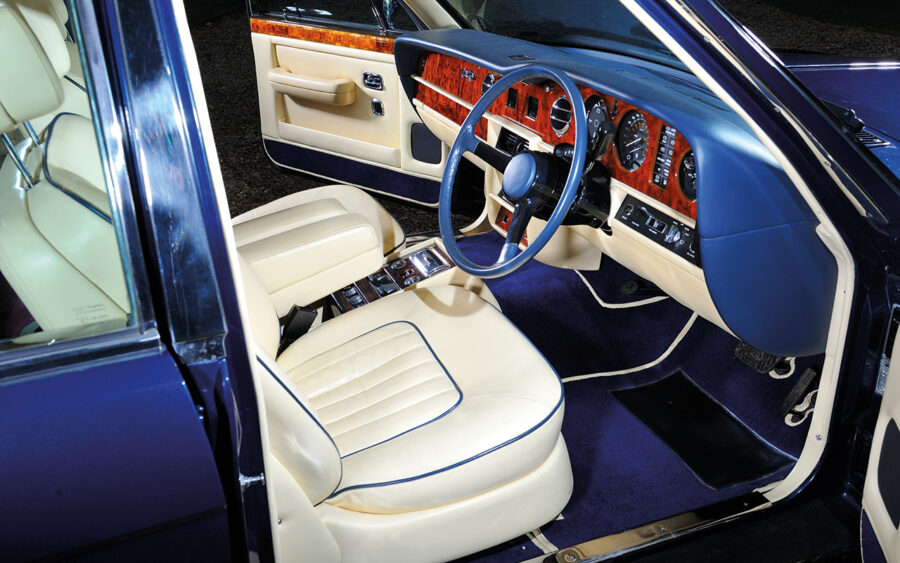
It’s on the inside that the Rolls-Royce scores more points over the Mercedes and again, it’s just a different way of doing things than being simply better or worse. The fixtures and fittings in the Mercedes are all engineered to perform a function as well as they possibly can, while the Rolls-Royce’s interior has been designed to appeal on a more subjective level. The trimming and the veneer are all of course performed by hand in the Spirit which creates an entirely different experience from the Mercedes, no matter how high quality the plastic mouldings or how expensive they were to engineer.
The Spirit in our photos is a 1989 example and so benefits from all the improvements made to the model over its lifetime, such as fuel injection and ABS which kept the car up to speed with the competition. It’s also a supreme example of how the sumptuous trimming of the Rolls-Royce kept the car on a different level from the mass-produced Mercedes: the Royal Blue exterior and magnolia hide are a classic combination. The picnic tables and built-in glassware in the rear sum it up: here was a car to travel in without being inconvenienced by the actual business of travelling.
And that in a nutshell is the appeal of the Silver Spirit. It may be a design rooted in the ’60s but that just doesn’t matter, something which was very handy indeed for Rolls-Royce which was able to rely on the Shadow/Spirit platform until the BMW-powered Seraph arrived in 1998.
Mercedes S-Class (W116) vs Rolls-Royce Silver Spirit: our verdict
I was initially drawn to the Rolls-Royce through a combination of familiarity and a love for the British motor industry’s knack of creating successful products out of unlikely circumstances: the same thinking which saw the Jaguar XJ40 transformed into the world-beating XJ8 and which saw the MGF created out of Metro bits or the Aston Martin DB7 built on a 1970s XJ-S floorpan.
I’d always considered the Mercedes a touch anonymous but when you get close to one in the course of driving and photographing it, the sheer quality of the W126 shines through and it’s clear that the highly focused engineers in Stuttgart were just as obsessed with their results as the blokes in Crewe lovingly polishing the walnut and hand-soldering the radiator shell. Ultimately then my vote goes to the Mercedes.

